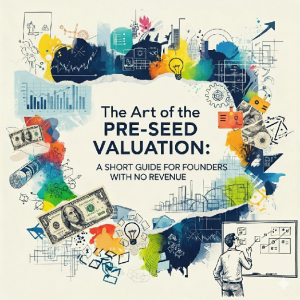
For many early-stage entrepreneurs, one of the most daunting questions is: “How do I set a valuation for my startup when I have little to no revenue?”. Without sales figures or traditional financial metrics, the process can feel abstract and challenging. However, a lack of revenue doesn’t mean a lack of value.
At the pre-seed stage, valuation is considered more of an art than a science. Since you can’t rely on conventional metrics, the focus shifts to your narrative, market positioning, and future potential. This guide breaks down how to approach valuing your pre-revenue company.
Focus on Your Story and Market Comparables
When you lack hard numbers, your most powerful tools are your story and data from the market. Investors need to be convinced of the vision and the opportunity.
- Benchmark Against Peers: The most effective starting point is to benchmark your startup against similar companies in your sector and location that have recently raised pre-seed funding. This data provides a realistic range and a defensible starting point for conversations with investors. Researching deals on platforms like Crunchbase or PitchBook can provide invaluable insight into what the market is currently paying for businesses like yours.
Highlight Your Core Assets
Beyond market comparables, your valuation is built on the inherent strengths of your venture. Investors are looking for signals that predict future success. Be prepared to highlight the following
- The Founding Team: Emphasize the strength, experience, and unique qualifications of your founding team. Why are you the right people to solve this specific problem?
- Target Addressable Market (TAM): Clearly define the size of your target market. A large and growing TAM indicates significant potential for scale and returns.
- Product Progress: Showcase the progress you have made on your product or Minimum Viable Product (MVP). A working prototype or early user feedback is a powerful demonstration of your ability to execute.
Understanding the Numbers:
While it’s an art, there are still figures to consider. Based on the current market, a typical pre-seed valuation in the United Kingdom for example ranges from £1.5M to £4M. The numbers would be higher or lower depending on your location. In the US it will even vary depending on the city/state. Where your company falls in this range will depend heavily on the strength of the factors mentioned above—your team, market size, and product progress.
Frame for the Future, Not the Present
Finally, it is crucial to position your valuation correctly. Investors are not just buying into your company as it is today; they are investing in what it can become. Therefore, you should frame the valuation as a reflection of your startup’s potential over the next 12 to 18 months, not just its current state. This forward-looking perspective aligns your goals with the investor’s expectation of future growth.